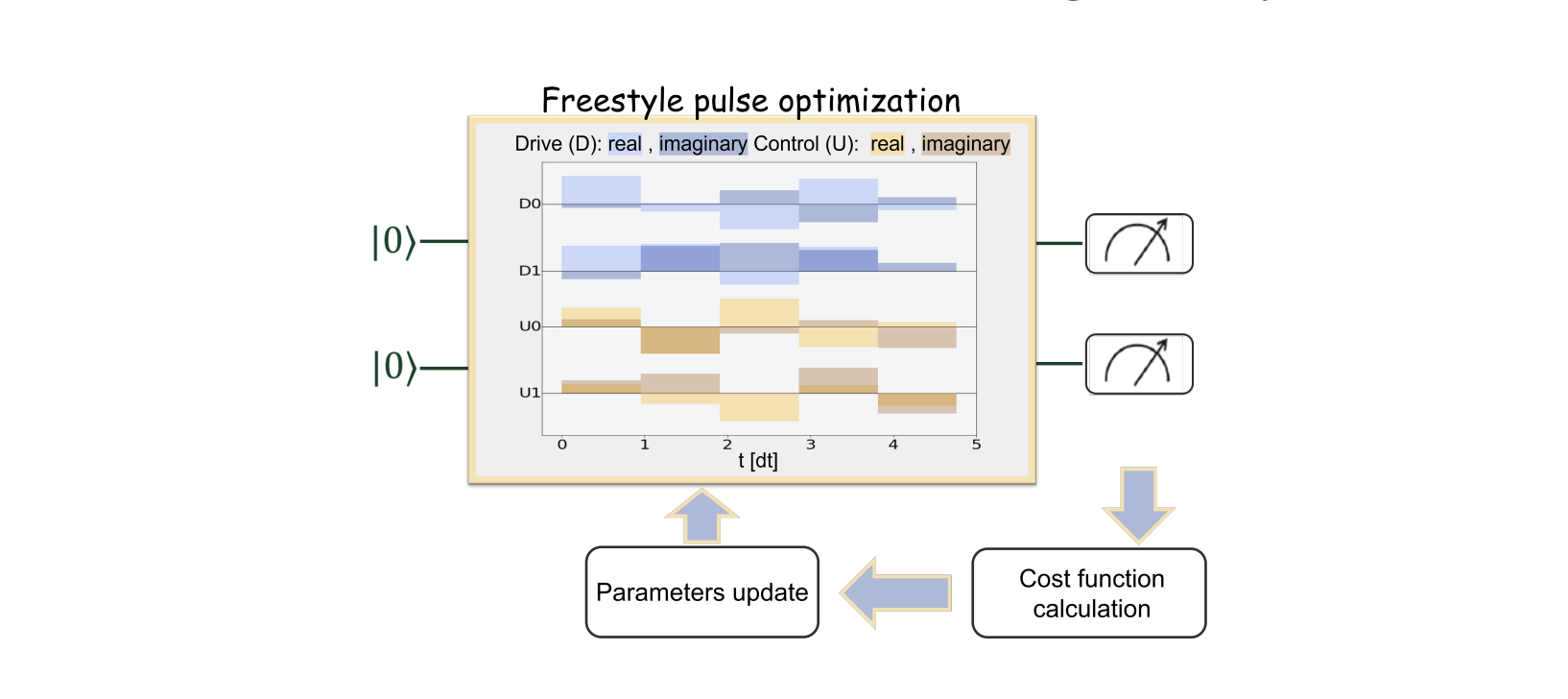Quantum computing, a rapidly evolving field, is currently hindered by hardware noise. Variational quantum algorithms (VQAs) are popular due to their shallow circuits, but are also affected by hardware noise. To improve noise resilience, new quantum circuit architecture designs are being developed. Quantum optimal control (QOC) techniques and machine learning are being used to improve gate fidelity and state preparation.
Variational pulse optimization is another strategy, with three main approaches: gate-based, shape-based, and square pulse. A new scheme for superconducting devices combines the square-pulse method with direct bidirectional control, reducing pulse duration and improving accuracy. This scheme could significantly impact quantum computing, opening up new research directions.
What is the Current State of Quantum Computing?
Quantum computing is a rapidly evolving field that promises to revolutionize the way we process information. However, the current state of quantum computing is hindered by hardware noise, which restricts the ability of quantum devices to fulfill their potential. Variational quantum algorithms (VQAs) have gained popularity due to their shallow circuits, but despite significant scientific effort, they are still hampered by hardware noise. To improve their noise resilience, one strategy is to develop new, shallower quantum circuit architecture designs. An alternative approach has been recently attempted via direct manipulation of the hardware degrees of freedom.
In superconducting qubits, each quantum gate is implemented via a fixed set of microwave pulses. Quantum optimal control (QOC) techniques, where pulse shapes are carefully designed, can be used to improve the fidelity of the gates and speed up the circuits’ execution times. Such pulse optimization methods can also be utilized for state preparation. Machine learning techniques have further contributed to the improvement of precise state preparation via pulse engineering methods.
What is Variational Pulse Optimization?
Variational pulse optimization aims at the minimization of a predefined VQA cost function rather than the precise fidelity of a target gate or state. Various strategies have emerged, which can be categorized into three groups: gate-based approach, shape-based approach, and the square pulse method. The gate-based approach leverages conventional quantum gates by transpiling gate-circuit Ansatz into corresponding standard DRAG (derivative removal by adiabatic gate) pulses and optimizing their amplitudes and frequency envelopes. The shape-based approach builds on familiar pulse shapes such as Gaussian and DRAG pulses and tweaks them for single or two-qubit operations. The square pulse method takes a more straightforward approach with discrete time square pulses adjusting merely the amplitudes.
How Does the New Scheme for Superconducting Devices Work?
A new fully flexible scheme for superconducting devices has been introduced that combines the square-pulse method with direct bidirectional control over two-qubit channels for enhancing flexibility and expressibility. Inspired by machine learning’s ability to learn without being explicitly programmed, this method autonomously discovers the most effective pulses within the devices’ physical constraints by tuning the pulse amplitudes across both single and two-qubit channels at each discrete time step.
This method was tested on ground-state calculations of the H2 and LiH molecules and demonstrated a significant reduction in pulse duration and substantially improved accuracy compared to previous gate-based and pulse-based results on real hardware. The reduction in pulse duration was achieved in two steps: first, the qubit-efficient variational quantum selected-configuration-interaction (VQSCI) scheme was employed, which finds molecular ground states using relatively few qubits and shallow circuits. Second, the VQSCI gated Ansatz was replaced with the freestyle pulse, thereby reducing the pulse duration further.
What is the Impact of the New Scheme on Quantum Computing?
The new scheme’s impact on quantum computing is significant. The reduction in pulse duration aligns with the bang-bang control theory principles advocating for abrupt and robust control applications for quick and efficient outcomes. The scheme was applied to the ground-state determination of the LiH molecule, achieving unparalleled precision with a pulse duration that is six times shorter than that of the counterpart circuit duration.
This new scheme opens up new research directions in quantum computing, particularly in the area of pulse design and the VQSCI algorithm. The scheme’s performance on the H2 molecule upon IBMQ hardware attains a pulse duration that closely reaches the theoretical quantum speed limit (QSL). This section also addresses leakage and measurement errors, which are critical considerations in quantum computing.
What is the Pulse Hamiltonian in Superconducting Qubits?
In a superconducting setting, the Hamiltonian over Nq qubits is given by a specific formula. The single qubit drive channels and the two-qubit control channels can be tuned. The Hamiltonian includes a tunable drive channel for the kth qubit, a tunable two-qubit control channel of qubit k over qubit l, and the fixed cross-resonance Hamiltonian, which generates an uncontrolled interaction between qubits k and l. The device topology accounts for all qubits connected to the kth qubit. This understanding of the pulse Hamiltonian in superconducting qubits is crucial for the development and application of the new scheme for superconducting devices.
Publication details: “Molecular groundstate determination via short pulses on superconducting
qubits”
Publication Date: 2024-03-26
Authors: Noga Entin, Mor M. Roses, Reuven Cohen, Nadav Katz, et al.
Source: arXiv (Cornell University)
DOI: https://doi.org/10.48550/arxiv.2403.17789

